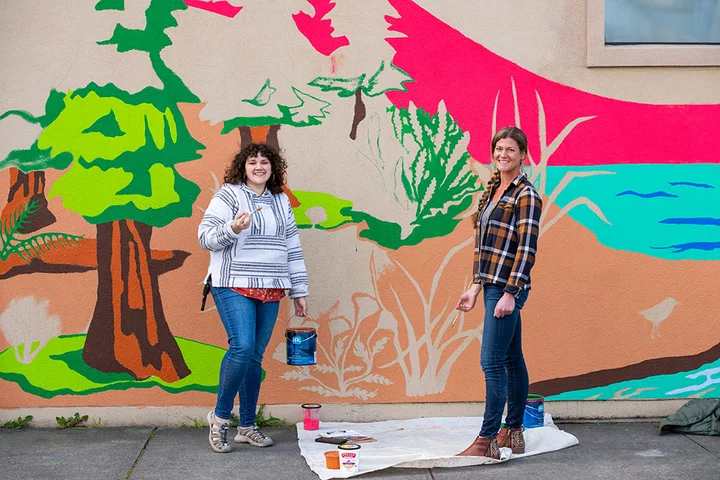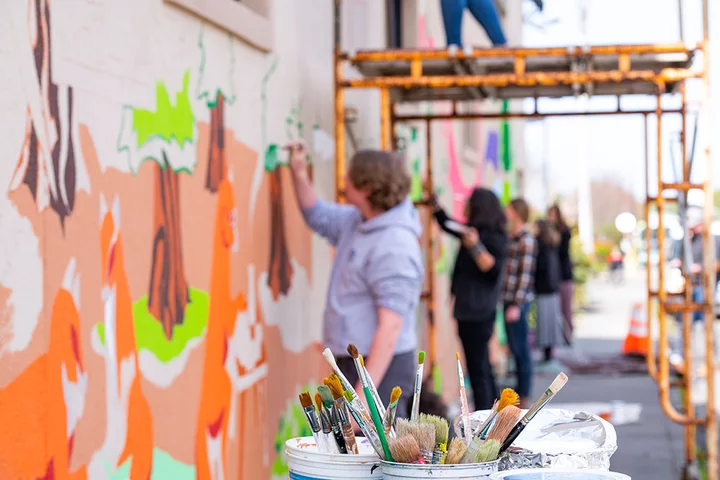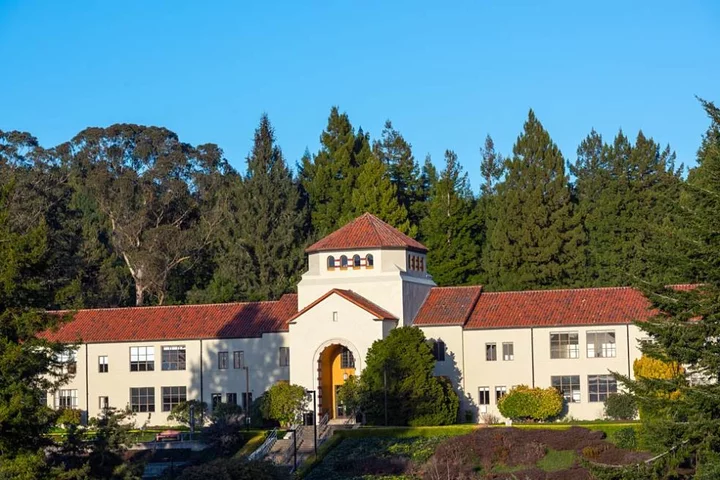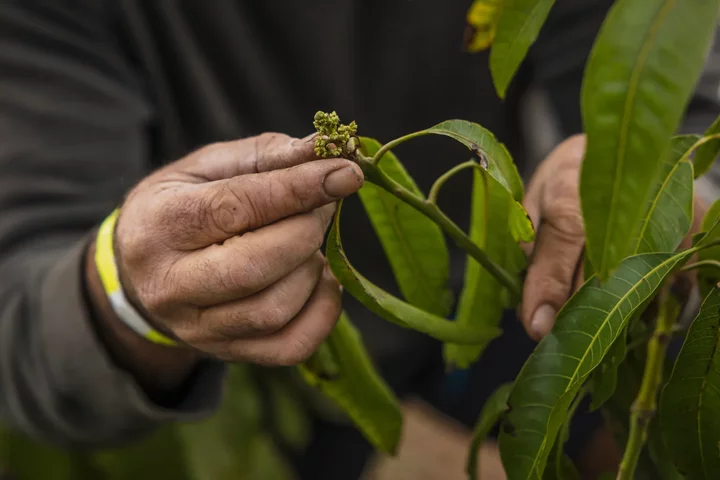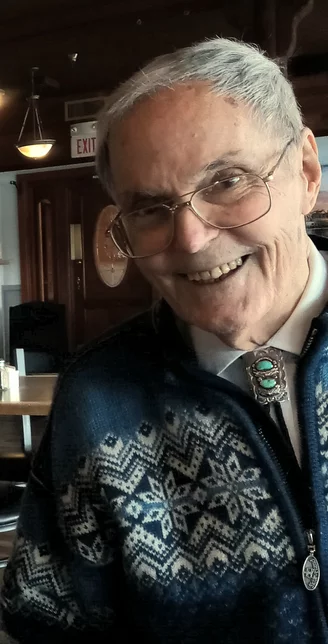OBITUARY: Marvin John Rogers, 1949-2023
LoCO Staff / Wednesday, May 10, 2023 @ 6:56 a.m. / Obits
Marvin John Rogers, 74, of Eureka, passed away on April 24.
John was a loving father and grandfather whose hobbies were classic cars and motorcycles. He worked with his brother Ron for many years specializing in custom furniture. He then went on to being the number-one sales man at Harper Ford Motors. Lastly, he worked for Richard Miller Motorcycles, where he retired from.
John loved playing his guitar and singing karaoke. He even taught his grandchildren to play the guitar.
He is survived by his brother Ron, his three sisters, Kim, Christine, and Tamara, and his three sons, John T, Don, and Dan. John T’s partner Trish and his children John Jr., Damon, Britton, Lucy, and Aimee. Don’s children Levi, Sierra, and Tessa. Dan’s partner Heather and their children Dylan and Madison.
John loved his family, and he will be forever in their hearts. No public services are planned, and a private celebration of life will be observed by his family.
###
The obituary above was submitted on behalf of John Rogers’ loved ones. The Lost Coast Outpost runs obituaries of Humboldt County residents at no charge. See guidelines here. Email news@lostcoastoutpost.com.
BOOKED
Today: 5 felonies, 13 misdemeanors, 0 infractions
JUDGED
Humboldt County Superior Court Calendar: Today
CHP REPORTS
Sprowl Creek Rd / Briceland Dr (HM office): Traffic Hazard
ELSEWHERE
NPR: A tribe in Arizona planned to connect 600 homes to electricity. Then the funding was cut
The Hill: Trump returns to TikTok: Young people ‘owe me big’
Washington Post: Wild rice binds this tribe together. It’s under threat from every direction.
The Atlantic: Stephen Miller Is Going for Broke
HUMBOLDT TODAY with John Kennedy O’Connor | May 9, 2023 (San Marino Week, Day 1)
LoCO Staff / Tuesday, May 9, 2023 @ 5:29 p.m. / Humboldt Today
HUMBOLDT TODAY: Did you ever dream you’d get your Humboldt news delivered to you in the dead of night from the streets of the world’s oldest republic? Yes? Well, you’re an odd one.
This week LoCO has dispatched our very own John Kennedy O’Connor to the nation state of San Marino. New temporary location, same local news. Tune in! Ciao bella!
FURTHER READING:
- Cal Poly Humboldt Professor Leads First-of-its-Kind Study on Legacy Cannabis Genetics
- Up in Brookings, a Church Keeps Feeding the Hungry Despite the City’s Orders to Stop
- Cal Poly Humboldt to Hold Its First Regional Commencement Ceremony in Beverly Hills Next Monday
HUMBOLDT TODAY can be viewed on LoCO’s homepage each night starting at 6 p.m.
Want to LISTEN to HUMBOLDT TODAY? Subscribe to the podcast version here.
NEW MURAL ALERT! Students Adding Colorful Work of Art to Redwood Coast Montessori High School in Arcata; Community Invited to Public Paint Day This Weekend
LoCO Staff / Tuesday, May 9, 2023 @ 4:21 p.m. / Art
Caroline Voorhees (left), student teacher and Art Education alumna, and Redwood Coast Montessori High School art teacher Saha Lyth (left), working on the school mural | Photos submitted
###
Some Redwood Coast Montessori High School students have been working hard to add a colorful mural to the side of the schools newest campus, which is in the former Ten Building (and Arcata Bowl before that) on K Street in Arcata.
Learn more about the progress they’re making and about upcoming public paint days and the mural’s official unveiling event in the following press release from Cal Poly Humboldt:
On a busy corner in downtown Arcata, redwood trees are sprouting from the sidewalk, foxes cavort, and a blue whale soars overhead.
Redwood Coast Montessori High School students are in the middle of painting a huge new mural at the corner of 8th and K Street in Arcata. The mural celebrates the North Coast, and is a collaboration with Cal Poly Humboldt students and the community.
Sasha Lyth, an art instructor at Redwood Coast Montessori, initially envisioned decorating just one corner of the building’s wall. But after discussions with the building owner, the scope of the mural expanded to the full wall, 127 wide and about 20 feet tall.
Lyth and her student teacher, Caroline Voorhees, who’s earning a teaching credential through Humboldt, gathered ideas to create the mural.
“We’ve had an amazing amount of student involvement in designing the mural,” says Lyth. “We worked with the entire school to come up with broad themes and what we wanted to reflect.”
They settled on local landmarks and flora and fauna of the North Coast, and students submitted a wide collection of drawings, which Lyth and Voorhees combined into one design for the wall.
Around the beginning of the year, three Art Education students from Humboldt connected with Lyth to complete their senior project—an eight-week curriculum with Redwood Coast Montessori students to build artistic concepts, skills, and help them complete the mural. With help from Art professor Jim Woglom and Art technician Jim Woodhead, the team projected the mural design onto the wall and students and families worked late into the night tracing the design.
After the completion of the curriculum, the rest of the Humboldt Art Education class began to visit the mural on painting days to help finish it before the end of the Redwood Coast Montessori semester in June. They’ve also had some community painting days, and are anticipating holding more before summer break.
The public is invited to join Redwood Montessori students and faculty for public paint days on Saturday, May 13 and Saturday, May 20.
A Mural Unveiling Party for Friday, June 9 during Arts Arcata (6-9 pm), that will include a student craft fair, the Los Giles Taco Truck, and music by the Redwood Coast Chorus and The Vanishing Pints.
Students from Redwood Coast Montessori High School designed and painted the mural with help from instructors, Cal Poly Humboldt Art Education students, and community members.
A color key helps painters fill in the outline, which was projected onto the side of the building
Cal Poly Humboldt Professor Leads First-of-its-Kind Study on Legacy Cannabis Genetics
LoCO Staff / Tuesday, May 9, 2023 @ 11:53 a.m. / Cal Poly Humboldt
Photos via Cal Poly Humboldt
From Cal Poly Humboldt:
Growing under redwood canopies and prohibition, legacy cannabis cultivators cross bred cultivars (plants bred for desirable traits) to create strains such as Blue Dream and Sour Diesel. Popularized in the underground market, these varieties are now some of the best selling strains on the legal market today.
One Cal Poly Humboldt professor is leading the first-of-its-kind study that aims to trace lineage, and preserve these genetics and the communities that steward them.
Dominic Corva, Sociology professor and Cannabis Studies program director, is the principal investigator (PI) on a research team that received nearly $2.7 million from the California Department of Cannabis Control (DCC) to support the Legacy Cannabis Genetics: People and Their Plants study. The interdisciplinary, community-driven study aims to identify, document, and preserve California’s cannabis genetics, telling the stories of its legacy communities throughout the state, from Humboldt County to the Central Coast, and Southern California.
The legacy community, according to the nonprofit research organization, the Origins Council, includes “cannabis producing regions […] that have established prolific small-scale cannabis cultivation and herbal medicine craft over the past two decades, or longer.”
Corva is conducting the research alongside co-PIs Genine Coleman, executive director of the Origins Council; Rachel Giraudo, Anthropology professor at CSU Northridge; Eleanor Kuntz of plant science company LeafWorks; and Todd Holmes, historian at the Oral History Center at UC Berkeley. Researchers are also partnering with the Cannabis Equity Policy Council, an organization that represents the interests of communities of color.
As part of the community-based research model, the team will conduct town halls, include community-designed advisory boards, and put out calls and recommendations for interviews. They hope to conduct hundreds of interviews, and preserve hundreds of plants. Research outputs will include: herbariums, genomics data, a database of 90 oral history videos, and a series of educational webinars and publications.
The two-year, scientific study will begin this year. Graduate and undergraduate students in the University’s new Cannabis Studies program—which launches this fall—will help conduct the research. This includes transcribing and coding interviews, and collecting archival data.
Corva describes his part of the team process as synthesizing the California legacy cannabis genetics and community stories through ethnographic and archival research, aided by student research assistants.
“Community stories are a sustainable resource. They keep giving. They’re there in perpetuity to be learned from, drawn on, visited.”
“This research seeks to empower and protect California’s legacy cultivation communities who have overcome great adversity to innovate and steward one of the most important collections of cannabis genetic resources in the world,” says Coleman in a press release.
Corva also hopes the research motivates other cannabis communities, or those with other agricultural commodities, to preserve their cultural history. These regions may include Thailand, Bangladesh, Morocco, Spain, Colombia, Afghanistan, Iran, Jamaica, and more.
The project, he says, will also help inform the creation of appellations, like Champagne, which distinguishes products according to their geographical region of origin.
“It’s a form of collective marketing rights and the ability to record your genetic variant,” he adds. “When federal legalization comes along, this will position Californian’s small producers really well for the national and global marketplace.”
For Corva, the project is an organic development of his more than 13 years of policy and equity assessment research, including co-directing the University’s Humboldt Institute for Interdisciplinary Marijuana Research, and co-founding the nonprofit organization, the Center for the Study of Cannabis and Social Policy.
In addition to this project, 15 other academic institutions also received funding from the DCC as part of a $20 million investment in the scientific research of cannabis. Other research topics include investigating the short and long term effects of THC; interactions between THC and CBD; the health of California’s cannabis industry, and more.
Mangoes and Agave in the Central Valley? California Farmers Try New Crops to Cope With Climate Change
Alastair Bland / Tuesday, May 9, 2023 @ 8 a.m. / Sacramento
Gary Gragg examines buds on one of the mango plants he’s growing in the Sacramento Valley. Photo by Rahul Lal, CalMatters
In a world of worsening heatwaves, flooding, drought, glacial melting, megafires and other calamities of a changing climate, Gary Gragg is an optimist.
As California warms, Gragg — a nurseryman, micro-scale farmer and tropical fruit enthusiast — looks forward to the day that he can grow and sell mangoes in Northern California.
“I’ve been banking on this since I was 10 years old and first heard about global warming,” said Gragg, 54, who has planted several mango trees, among other subtropical trees, in his orchard about 25 miles west of Sacramento.
Gragg’s little orchard might be the continent’s northernmost grove of mangoes, which normally are grown in places like Florida, Hawaii and Puerto Rico.
Northern California’s climate, he said, is becoming increasingly suitable for heat-loving, frost-sensitive mango trees, as well as avocados, cherimoyas and tropical palms, a specialty of his plant nursery Golden Gate Palms.
“Climate change isn’t all bad,” Gragg said. “People almost never talk about the positives of global warming, but there will be winners and losers everywhere.”
Mangoes may never become a mainstream crop in the northern half of California, but change is undoubtedly coming. Hustling to adapt, farmers around the state are experimenting with new, more sustainable crops and varieties bred to better tolerate drought, heat, humidity and other elements of the increasingly unruly climate.
In the Central Valley, farmers are investing in avocados, which are traditionally planted farther south, and agave, a drought-resistant succulent grown in Mexico to make tequila.
In Santa Cruz, one grower is trying a tropical exotic, lucuma, that is native to South American regions with mild winters. Others are growing tropical dragonfruit from the Central Coast down to San Diego.
Some Sonoma and Napa Valley wineries have planted new vineyards in cooler coastal hills and valleys to escape the extreme heat of inland areas. And several Bay Area farmers have planted yangmei, a delicacy in China that can resist blights that ravage peaches and other popular California crops during rainy springs.
“People almost never talk about the positives of global warming, but there will be winners and losers everywhere.”
— Gary Gragg, Sacramento Valley farmer
Near the town of Linden, farmer Mike Machado, who served in the state Assembly and Senate from 1994 to 2008, is one of many growers in the arid San Joaquin Valley who have replaced some stone fruit and nut trees with olives, historically a minor California crop mostly produced in Mediterranean nations.
“We’re adjusting for survival,” Machado said.
Climate change essentially means that Southern California’s conditions are creeping north up the coast and into the valley, while Oregon and Washington are becoming more like Northern California. Precipitation, winds, fog, and seasonal and daily temperature patterns — all of which determine which crops can be grown where — have all been altered.
“With climate change, we’re getting more erratic entries into fall and more erratic entries into spring,” said Louise Ferguson, a UC Davis plant physiologist.
Researchers predicted that “climatic conditions by the middle to end of the 21st century will no longer support some of the main tree crops currently grown in California.…For some crops, production might no longer be possible.”
“Fruit growers all around the world in the warm regions are worried about” warming trends, particularly in winter, said Eike Luedeling, a coauthor of the study and a professor of horticultural sciences at Germany’s University of Bonn.
UC Davis researchers are at the cutting edge of the push to adapt, working to make California’s lucrative walnut, pistachio and stone fruit orchards more resilient by selectively breeding for heat, disease and drought tolerance.
About three-quarters of the nation’s fruits and nuts are grown in California, but fruit and nut trees are among the most vulnerable crops to climate change.
Luedeling’s research suggests that high winter temperatures could severely reduce walnut yields about once a decade.
Katherine Jarvis-Shean, an orchard advisor with the UC Agriculture and Natural Resources program, said that effect will be magnified farther south: “That’s probably one in five years in the southern San Joaquin Valley,” she said.
Searching for genetic resilience
Pistachios have grown to one of the state’s mightiest crops, with acreage of mature trees now covering more than 400,000 acres. The 2021 harvest totaled about 577,000 tons and was valued at nearly $3 billion.
Now crop scientists are working to save these valuable orchards from the effects of warming.
Warmer winters can cause male varieties to bloom and release pollen too late, after the female flowers have opened. This means less pollination and less fruit, and in 2015 many orchards suffered total crop failure.
Patrick Brown, a UC Davis nut crop breeder, said farmers have solved this problem, at least for now, by grafting additional male varieties with different blooming schedules into the groves. “It’s a fairly easy hedge against that problem (of warmer winters),” he said. “No matter when the females bloom, there should be some pollen for them.”
Breeding programs to reduce nuts’ chill requirements are underway, but Brown said these trees have trade-offs: They tend to wake up earlier from winter dormancy, which can put premature foliage at risk of frost damage and expose young leaves to rainfall that causes blight.

Gragg’s farm near Winters grows an array of crops, including citrus (shown above) and less-traditional ones like tropical fruits. Photo by Rahul Lal, CalMatters
Brown is now leading a hunt for genetic resistance to walnut blight in the shady groves of the Wolfskill Experimental Orchard, a repository of nearly 9,000 grapevine and tree fruit varieties from around the world. This genetic bank, owned by UC Davis and jointly run with the U.S. Department of Agriculture, includes walnut trees of several species and hundreds of varieties.
Brown’s experiment involves showering the walnuts with sprinklers in spring and summer and observing which develop the symptoms of blight — oil-black stains on the leaves and fruit.
His research is focused on walnut trees grown from seeds collected in the Republic of Georgia, where humidity creates conditions amenable to the disease. This likely has created localized genetic resistance — what Brown hopes to find.
“It gets pretty hot and humid (in Georgia) during the growing season, and if there’s resistance to blight anywhere, that would probably be a good place to look,” he said.
“Drought tolerance is a really tough nut to crack, because it doesn’t just involve roots — it involves every system of the plant.”
— Claire Heinitz, U.S. Department of Agriculture
Still other problems are emerging as California’s weather patterns grow more erratic.
Early fall rains have been a problem for walnuts, spoiling ripening fruits. And heat waves — especially when they follow a rain event — can cause fruit to drop or spoil. Almost 40% of last fall’s walnut crop was lost when Central Valley temperatures approached 115 degrees, according to Robert Verloop, executive director of the California Walnut Board and the California Walnut Commission.
Walnut growers “are worried about heatwaves, and they should be,” Jarvis-Shean said.
Another UC Davis study at the Wolfskill orchard aims to identify genes for heat tolerance in European walnut trees. Claire Heinitz, a U.S. Department of Agriculture research leader, said trees are sampled with an instrument that measures photosynthesis. The idea is to find unique individuals that maintain basic functions under brutal heat conditions.
This year, she said, the project, led by researchers Andrew McElrone and Mina Momayyezi, might be expanded to include grapes, which are highly prone to heat damage, as well as pistachios and almonds.
Heinitz said much of the research aims to create hardier root systems, which can protect the trees against soil pathogens, salts and other stressors. However, breeding drought resilience into California’s major crops may be a more elusive goal.
“Drought tolerance is a really tough nut to crack, because it doesn’t just involve roots — it involves every system of the plant,” Heinitz said.

Researcher Andrew McElrone uses a porometer on an almond tree leaf at the Wolfskill Experimental Orchards near Winters. Photo by Rahul Lal, CalMatters
California’s subtropical future?
The winter of 2023 was an unusually cold one, but it hardly suggests a trend toward nut-friendly weather.
UCLA climate scientist Daniel Swain said last month that the low temperatures of the past several months were “a fluke” amid a long-term trajectory of increasingly warm winters. In fact, he said, “this may well be the coldest winter that some places will see now for the rest of our lives.”
If true, that could mean smooth sailing for Chiles Wilson Jr. and his family. A fifth-generation Sacramento-San Joaquin Delta farmer, Wilson has planted thousands of avocado trees of a dozen varieties near Walnut Grove and Cortland. Now the fruit, harvested almost year-round, is a key component of the family’s fruit-packing company, Rivermaid.
Most California avocados are grown between San Diego and Santa Barbara, covering nearly 50,000 acres and producing more than $300 million in direct farm sales.
Wilson recalls that when he pitched the avocado idea to his family nearly a decade ago, they discouraged him.
“They said, ‘Nah, they won’t produce here,’” he said. “And I said, ‘But that one does.’” He pointed to a large, fruit-laden avocado tree within sight of the farm’s main office. They gave it a shot, planting more than 600 avocado trees per acre.
Wilson knows, even in an era of warming, that his avocado orchards are a gamble. “We’re one killer freeze away from being wiped out,” Wilson said.
However, this winter, the temperature dipped below freezing 16 times in the Wilsons’ avocado groves, yet the trees survived and are producing fruit.

Gragg holds Pinkerton avocados that he grows in the Sacramento Valley. Photo by Rahul Lal, CalMatters
Still other fruits, barely known to most Americans, could rise to greatness in a warmer California. Charlie Lucero, a home orchardist in Menlo Park, is helping introduce Californians to yangmei. Lychee-like red orbs with pits inside like a cherry and a taste like pomegranate and pine resin, yangmei are typically grown in China.
Now Lucero is serving as a consultant and marketer for several Northern California growers who are preparing to harvest their second crop.
Lucero said the fruit — a relative of the bayberry — has “zero chill requirement” and is also resistant to fungi and bacteria that can plague stone fruit growers.
“If we get a late rain, it doesn’t hurt us,” Lucero said of his small yangmei collaborative, called Calmei. “These trees are well suited for California, where the weather is becoming less predictable.”
Lucero said they’ve been retailing for about $60 a pound. Last year’s crop totaled about 2.5 tons; this year, he expects about twice that.
An orchard project near Santa Cruz offers another glimpse into California’s possible future of farming.
Nate Blackmore of Wildlands Farm and Nursery is planting several acres with subtropical fruits, mostly from Central and South America — white sapote, ice cream bean, cherimoya, uvaia, dragonfruit and guabiroba.
The main attraction of his up-and-coming orchard will be lucuma trees. Native to western South America, lucuma resembles a round avocado with a pointed bottom, with mealy, sweet flesh like a yam.
All these species are tolerant of frost — but just barely.
“It’s so scary having all these subtropical fruit trees, and wondering how many would survive a bad freeze,” Blackmore said.
Yet another tropical crop could gain an advantage from California’s warming climate: coffee.
It’s being grown at orchards in Santa Barbara, Ventura and San Diego counties, and it’s not cheap: One company is selling organic coffee beans for $286 per pound. But the trees are hardly sustainable in those regions, which are reliant on water imported from Northern California and the Colorado River: Watering them takes at least several feet of water per year.
Another tropical fruit more suitable for drought-prone land is the pitaya, or dragonfruit. Grown from tropical cactus plants, it can be farmed in California with as little as 1.5 feet of applied water — a third of what citrus and avocados need, according to Ramiro Lobo, a San Diego County farm advisor with the UC Cooperative Extension program. His program has distributed about 50,000 dragonfruit cactus cuttings to small farmers from San Luis Obispo down to San Diego and at least 1,000 acres are in production.
Dry farming to cope with water scarcity
Among all the pressures for California farmers, none is so persistent and serious as water supply. The agriculture industry uses about 80% of the water Californians consume. During droughts, farmers — especially those growing some 4 million acres of grapevines and fruit trees — pump water from the ground.
This has caused thousands of drinking water wells to run dry and land to sink as aquifers shrivel. The state passed a new groundwater law in 2014 that is beginning to take effect, and could force as much as 900,000 acres of irrigated cropland, mostly in the arid San Joaquin Valley, out of production.
But this is inconsequential to farmers like Tristan Benson. Based in western Sonoma County, he practices dry farming.
Benson and his partners usually harvest 20 to 30 tons of heirloom wheat and barley from loamy hillsides, selling the grain for use in bread, beer and distilling. To grow these staples, they just need a little rain, forgoing the irrigation that other growers, like those in the Central and Imperial valleys, rely upon.
Even through recent droughts, Benson said, he has always pulled in a crop. “The closer to the coast we are, the better we do,” he said. Fields are planted in October or November, and about a week after the first heavy rain, the seeds germinate, and usually the ground stays moist until the summer harvest time.
Benson’s methods could be a model for sustainability for other California growers, who have “planted millions of acres of trees that always need water, and our reservoirs have at most a three-year supply,” he said.

Claire Heinitz, a scientist with the U.S. Department of of Agriculture, helps manage the Wolfskill Experimental Orchards, a collection of thousands of crop varieties used for breeding experiments. Photo by Rahul Lal, CalMatters
Benson thinks a smart farming model is to grow winter crops without irrigation, and when reservoirs are full — as they are now — plant irrigated fields with annual summer fruits and vegetables. Apples, tomatoes, pears, grapes and potatoes can all be dry-farmed in cooler regions; farther inland and to the south, dry farming is more challenging, at least for most crops.
Geoff Vanden Heuvel, director of regulatory and economic affairs at the Milk Producers Council, said winter farming of grain and feed crops, with just a few inches of irrigation water, could help feed livestock with less groundwater use.
More than a quarter of the state’s feed crops are grown in areas entirely reliant on groundwater, and this dependency will likely translate into fewer California cows in the future, he said. By the 2040s, when the groundwater law takes full effect, dairy herds are expected to drop by about 10%. “That’s about 130,000 fewer cows,” Vanden Heuvel said.
Ferguson of UC Davis said Central Valley farmers have grown accustomed to harvesting maximum yields because “we had more reliable water. Maybe now, when we don’t have the water or it’s more expensive, they’ll have to settle for a lower yield.”
Daniel Sumner, a UC Davis professor of agricultural and resource economics, said California’s agricultural identity already has changed drastically over time. In its earliest days of statehood, California was a major producer of rain-watered wheat, grown on several million acres. When irrigation became ubiquitous, so did specialty crops that thrive in a hot, dry climate but need water in the summer.
Almonds now cover more than 1.6 million acres of the Central Valley, and pistachios have seen explosive growth, “from almost nothing to a $2 billion crop in a few decades.”
He said predicting what crops will be trending in California in several decades is impossible, “but it’s hard to picture that we wouldn’t stay a specialty crop producer,” he said.
Economic turbulence, too
It’s not just the changing climate that’s guiding the future of one of California’s top industries. In the decades to come, growers will experience economic shifts, competition from imports and rising labor costs.
The increasing minimum wage, for example, has made even some high-value crops, like table olives, unprofitable to grow in California unless machines prune the trees and pick the fruit. Hand-based labor can suck up 45 to 60% of gross revenue, largely because olives must be carefully handled.
Spain, the world’s superproducer of olives, generates a cheaper product and has forced California growers to adapt, said Dennis Burreson, a vice-president at the Musco Family Olive Co., based in Tracy.
Burreson said machine harvesting is now becoming standard for many tree crops, adding, “eventually, I think hand-harvesting of many orchard crops is going to be in the rear-view mirror.”
Meanwhile, the state’s mighty walnut industry has been knocked on its side as oversupply and competition from China have sent prices crashing. In 2013, a ton of walnuts sold off the farm for $3,700. Now it’s about $700 per ton. On top of that, growers “are still sitting on 130,000 tons of the 2021 crop,” Verloop said, with some of that excess distributed to food banks.
So many walnut growers are now reportedly scheduled to have their trees uprooted and chipped that removal services can’t keep up.
Sumner said the economic upheaval of the walnut industry “doesn’t look like it’s turning around.”
Brown suspects that labor costs and land values will be just as strong drivers of agriculture’s evolution as the changing climate. Other regions of the world are producing crops for less, he said, which means California’s specialties will be niche and higher-quality produce.
“Whatever is going to be grown in California in 50 years,” he said, “is what can’t be grown elsewhere or what can be grown better here.”
###
CalMatters.org is a nonprofit, nonpartisan media venture explaining California policies and politics.
OBITUARY: Davina Renee Ou, 1978-2023
LoCO Staff / Tuesday, May 9, 2023 @ 6:56 a.m. / Obits
It is with great sadness that our beloved wife, mother, daughter and
sister, Davina Renee Ou, passed away April 27, 2023 at the age of 44.
Davina was born on December 3, 1978 to Donald and Mellie West in Eureka. She is survived by her husband, Mingwha Ou, and their three children, Mingwha Jr. (Toa), Tautua, Leilahanna Ou and her precious Lulu. She is also survived by her sister and brother-in-law, Amanda and Pago Neemia, as well as her brother and sister-in-law, Jared and Amy West. Her nieces and nephews: Tuutuuimalo, Lolua, Talamoni and Waiatupu Neemia along with a multitude of aunties, uncles, nieces and nephews.
Davina was born and raised here in Eureka and attended Lincoln Elementary School, Winship Middle School, Eureka High School and College of the Redwoods. Davina played many sports throughout her youth and high school years, including basketball, softball and volleyball. She was remembered by many for her athletic abilities.
In 1995, she met the love of her life, Ming, and tied the knot in 2004. They then began their family in 2006 and had three beautiful children. Davina worked at Hat World and successfully managed the store for nine years. She then started working at the Eureka Housing Authority, where she formed numerous friendships and impacted many lives. Throughout the years, Davina coached many youth sports beginning with coaching her brother, Jared. She then went on to coach her children and nieces and nephews. Davina took pride in coaching the children of the community. She treated each and every one of them as her own, and was loved and respected because of it.
As her children grew, you could always find or hear her in the stands cheering the kids on at every sporting event while being sure to give the referees and coaches a piece of her mind. When she wasn’t at sports games or spending time with her family she enjoyed going to Bear River Casino or dining at one of her favorite restaurants. She never missed the opportunity for a day trip to the river or camping with her friends and family. Davina made a friend wherever she went and was loved by many.
We were blessed to have you in our lives, Davina. You will forever be missed and in our hearts always.
We want to give a special thank you to Dr. Dieker and the medical staff for their care and support of our loved one, Davina. Also to all of our family and friends who came to be with us during this difficult time. We love and appreciate you all!
We will be having a celebration of life in honor of our Davina on Saturday, May 20 at 3 p.m. at Bear River Recreation Center in Loleta.
###
The obituary above was submitted on behalf of Davina Ou’s loved ones. The Lost Coast Outpost runs obituaries of Humboldt County residents at no charge. See guidelines here. Email news@lostcoastoutpost.com.
OBITUARY: Verne Leslie Skjonsby Jr., 1940-2023
LoCO Staff / Tuesday, May 9, 2023 @ 6:56 a.m. / Obits
Verne
Leslie Skjonsby Jr. passed away on May 2, 2023, in Cutten. He was lovingly cared for by family members spending his
final days at home. He was also given amazing care by Hospice of
Humboldt.
Verne was third-generation born in Honolulu. His grandfather Jason was born under the reign of King Kalakaua. The family was originally from the Azores and Madeira.
He attended Punahou High School and the Lawrenceville School and graduated from the University of Colorado with a degree in anthropology. He had a wide range of careers that generally were always involved with education.
He started teaching the gifted and highly gifted in science in the seventh and eighth grades. The students’ learning experiences took place flying rockets in the air and traveling on the R.V. Inland Seas on the San Francisco Bay.
He became fascinated with the early computers and taught a large company’s employees to use those very large computers. He went onto working for Tandy doing the final assembly of computers and again training people how to use their computers. His last job in computers was to teach bid estimating to contractors all over the United States. He especially liked doing it in Alaska, as the contractors would take him out in small planes to see different areas of Alaska.
He was a lay assisting minister in the Lutheran Church for 35 years — first in Burlingame, being trained by Pastor Peter Garrison, and then at Calvary Lutheran Church in Eureka. He spent the last years of his life training new Lay Assisting Ministries at Calvary, leaving a strong legacy behind. He served on Lutheran Homes for the Aging Board for fifteen years, and many years on Calvary Council.
He served on the Pacific Union School board for nine years and when he moved to Cutten he served on the Cutten School Board for four years. Every election he could be found doing a wide range of activities from being a poll worker to being a supervisor of several polling places. He felt it was very important to be a blood donor and was honored by Peninsula Blood Bank, in Burlingame, for his ten-gallon donation. When he moved to Humboldt, he gave seven gallons of blood to the local blood bank. Ill health stopped him from being a donor, which he was very disappointed about.
Verne was an avid reader, which made the Mensa book club one of his favorite activities. He was a faithful member of the group the 22 years he lived in Humboldt County. He liked being the host of the Book Group. He attended many of the other activities that Mensa provided.
He learned camping from his wife, Dorothy and most summers were spent camping in most of the Western United States and Canada. The family’s favorite spot was Yosemite, during both summer and winter. One winter even being caught in a blizzard while cross country skiing with his family. Being five stubborn individuals the family all made it back safely.
His father, Lieutenant Commander Verne Leslie Skjonsby, and his mother, Dorothy Marie Andrade Skjonsby, preceded him in death. He leaves behind his wife of 52 years, Dorothy Eda Svennngsen Skjonsby; his children, Johannes Skjonsby, Jason Skjonsby, and Kierstine Escalante; his daughters-in-law, Surya Skjonsby, Fern Dalton, and Stacy Escalante; and grandchildren, Karishma Skjonsby, Beorn Skjonsby, Phelan Escalante and Luca Escalante.
In place of flowers donations can be made to the Eureka Mission or Hospice of Humboldt, in memory of Verne Leslie Skjonsby, Jr.
Remembrance services will be held May 27 at 2 p.m. at Calvary Lutheran Church 716 South Ave. (across from Alice Birney) in Eureka. Fellowship will follow the service.
###
The obituary above was submitted on behalf of Verne Skjonsby’s loved ones. The Lost Coast Outpost runs obituaries of Humboldt County residents at no charge. See guidelines here. Email news@lostcoastoutpost.com.


